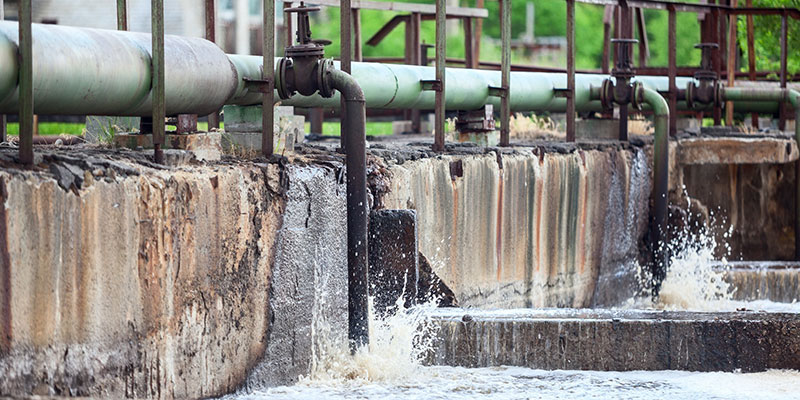As the U.S. enters what has been called the Replacement Era of water and wastewater infrastructure, what can be done to reduce the burden?
As legacy plants and pipelines deteriorate, strategies including water reuse and desalination are providing alternatives
Just after the turn of the millennium, the American Water Works Association warned of a coming Replacement Era, during which a century’s worth of aging pipe and treatment plants would reach the end of their service lives within just two decades. With water crises increasingly in the news, it seems the era is upon us now. How can we lighten the load on aging water and wastewater infrastructure?
In 2019, utilities in the United States spent more than $3 billion, more than $18 per wastewater customer, to replace almost 4,700 miles of pipeline. Pipelines can be some of the costliest components of water and wastewater infrastructure, routinely exceeding the costs of the plants they serve. Financing their repair and replacement can cripple communities.
Wastewater Treatment and Reuse
When legacy wastewater treatment is inadequate to meet needs, one solution is to site additional smaller plants directly at points of need. This decentralized approach has the added benefit of allowing utilities to retire old pipelines with no need to replace them. Because the plants are sited near the source of wastewater, dramatically less pipeline infrastructure is required.
In centralized systems, adopting reuse is often impossible for the community that generates the wastewater due to the cost of return pipelines from distant plants. Decentralized treatment keeps the water local. And with this type of on-site treatment, water reuse helps shoulder the load of overburdened centralized treatment plants.
Fluence’s membrane aerated biofilm reactor (MABR) technology is a highly efficient way to produce effluent that exceeds the highest nonpotable reuse standards in the world, including California’s Title 22 and China’s Class 1A. And the small footprint modular packaging of Aspiral™ MABR units makes it ideal for decentralization.
Desalination
Many growing communities have been forced to buy water piped from miles away at high expense. An alternative for communities near coastlines or above brackish aquifers is decentralized desalination, which reduces the burden on leaky pipelines, aging pumping stations, and distant water treatment facilities while delivering savings and climate resilience locally.
Modular NIROBOX™ seawater or brackish desalination plants offer the same small footprint packaging for decentralization as Aspiral™ and offer updated reverse osmosis (RO) technology for low-cost operation and maintenance.
Upgrading Existing Wastewater Plants
The more than 16,000 wastewater treatment plants in the U.S. are operating at a high average of 81% of their design capacities, and 15% have already reached or are exceeding capacity. When demand in a service area outgrows the capacity of the wastewater treatment plant that serves it, traditionally a new plant is planned and built at great expense.
A new plant is not always necessary. Fluence’s MABR technology is also available in the form of SUBRE modules, which are designed to upgrade existing wastewater treatment plants. Upgrades are made by lowering SUBRE towers into the chambers of existing wastewater treatment plants.
SUBRE can significantly increase effluent quality and boost the capacity of a plant to meet growing demand with no need to expand the plant’s footprint. And because SUBRE uses less air compression than legacy processes, it’s energy-efficient.
Unburdening Infrastructure With New Financing Models
A primary cause of today’s infrastructure crisis is a lack of access to the investment capital and organizational resources needed to keep plants maintained and operational over decades. New financing models, however, are quickly expanding communities’ access to up-to-date infrastructure.
Contracts including public-private partnerships (PPPs), build-own-operate (BOO), and build-own-operate-transfer (BOOT), for instance, have the power to deliver water and wastewater infrastructure with no upfront investment while bundling long-term operations and maintenance. Contact Fluence to learn more about flexible, modern financing and long-term maintenance through our Water Management Services.

